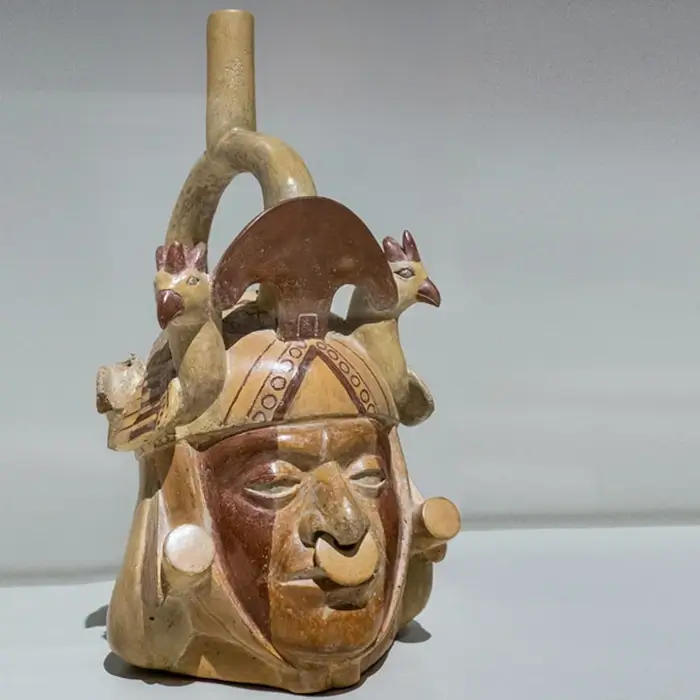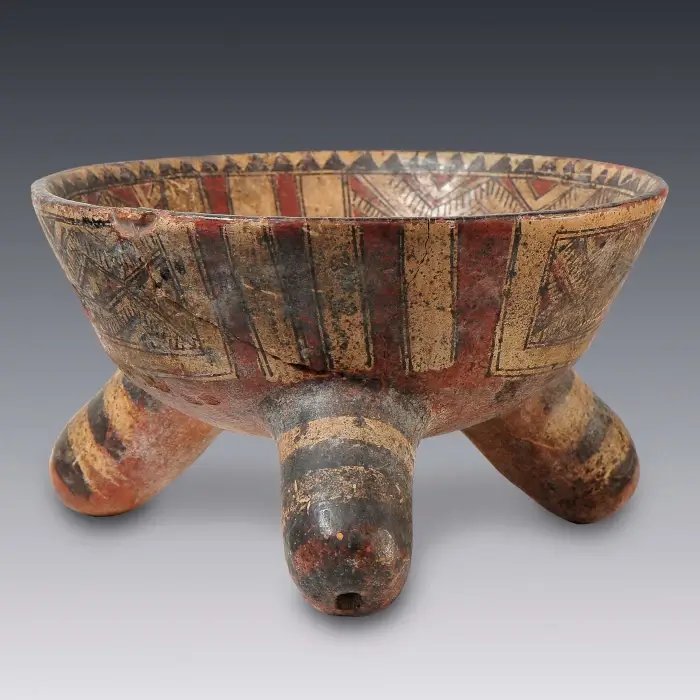The magic pottery of Casas Grandes in Paquimé
Casas Grandes pottery, emblematic of the culture that flourished in Paquimé between the 13th and 14th centuries, represents a bridge between the great Mesoamerican civilizations and the cultures of the American Southwest.
This pottery tradition is recognized for its advanced technique and geometric stylistics, where motifs of local fauna and abstract designs stand out, reflecting a sophisticated integration of varied elements in their compositions.
Paquimé, the nerve center of this culture, emerged as an important enclave of exchange, demonstrating the depth of its commercial and cultural connections through its ceramic art.
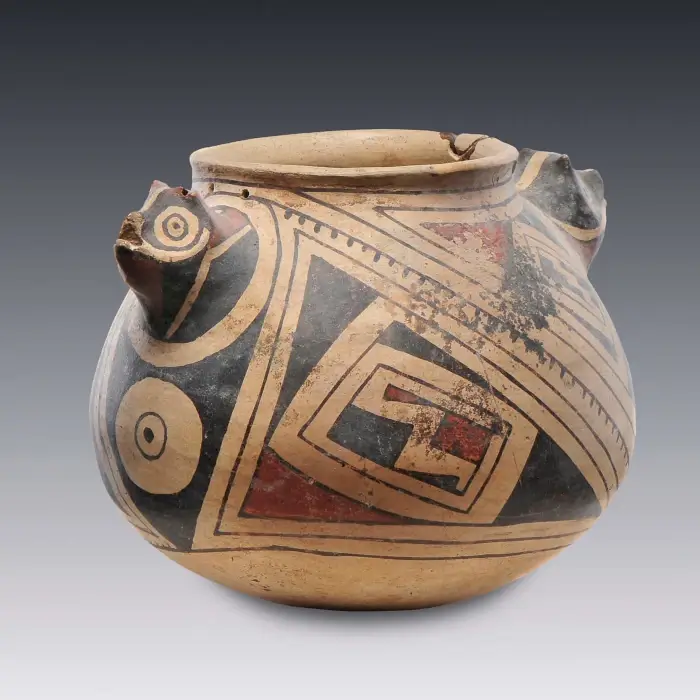
Art and symbolism in Casas Grandes ceramics: A study of the Paquimé culture
Casas Grandes pottery, originating in the Paquimé region, is recognized for its complex iconography and symbolism, reflecting the cultural fusion between the American Southwest and Mesoamerica. This pre-Columbian pottery is distinguished by its polychrome decoration, especially in styles such as Ramos, which features geometric designs intertwined with representations of local flora and fauna, including the emblematic macaques and feathered serpents, symbols of profound spiritual and social significance.
Studies reveal that, beyond their utilitarian function, these ceramic pieces served as a means of communicating cosmogonic beliefs and social structures, suggesting a complex web of relationships within this pre-Columbian community.
As I explore the techniques and styles of this pottery further, I will tell you how these elements carried a rich cultural narrative that has transcended to the present day.
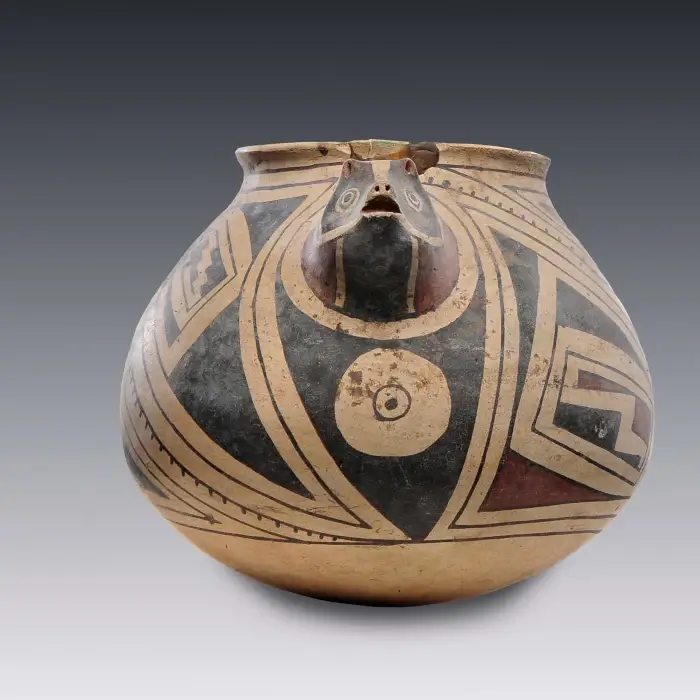
Techniques and styles of Casas Grandes pottery: A legacy of ancient Mesoamerica
Casas Grandes pottery reinvented ancient techniques, such as adding sand to the clay to prevent cracks and using molds to create round bases similar to prehistoric pots, the artisans of Mata Ortiz have kept alive the legacy of their ancestors.
The introduction of proprietary designs, combining symmetry and unstructured patterns, reflects an evolution in style, while maintaining the essence of the Casas Grandes tradition.
The iconography on the ceramics, ranging from representations of animals and feathered serpents to human figures and complex geometric designs, demonstrates a deep connection with nature and the cosmos, a characteristic aspect of pre-Columbian cultures.
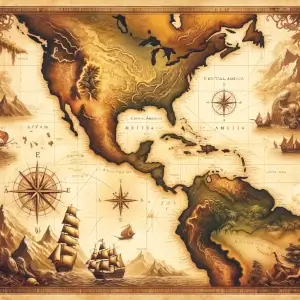
Where was each pre-Columbian culture?
Check our interactive map to see its period and location.
Paquimé pottery: Between the utilitarian and the ceremonial in the Casas Grandes culture
Paquimé pottery, emblematic of the Casas Grandes culture, oscillated between the profoundly utilitarian and the highly ceremonial, reflecting the complexity and richness of this ancient society.
The iconography present on the pottery, with recurring motifs such as feathered serpents and macaw heads, suggests a deep connection to Mesoamerican symbolism, uniquely integrated into the desert context of the American Southwest.
This fusion of styles and motifs not only highlights the artistic skill of the Paquimé potters, but also reflects the cultural synergy of the region, which encompassed both local and Mesoamerican influences.
The ceremonial use of ceramics is evident in the elaboration of pieces with a remarkable iconographic and stylistic richness, which were probably used in rituals or as offerings. At the same time, the presence of utilitarian elements in the pottery suggests an adaptation to the daily needs of the community, underlining the importance of pottery in the daily life of Paquimé. This balance between the functional and the symbolic underscores the sophistication and complexity of the Casas Grandes culture, which will be discussed later in the article when addressing frequently asked questions.

Buy pre-Columbian ceramics
Find original pieces and also reproductions identical to the traditional ceramic works that were made in pre-Columbian America and that are only found in museums, making them affordable.
